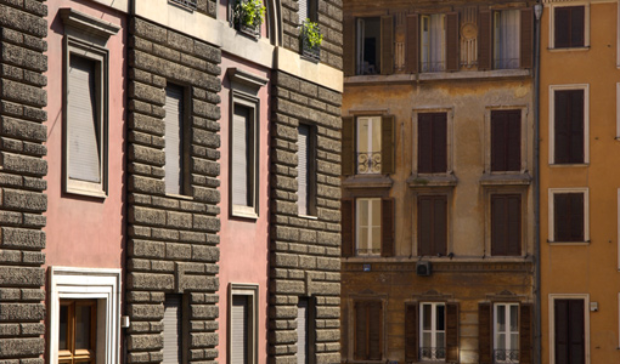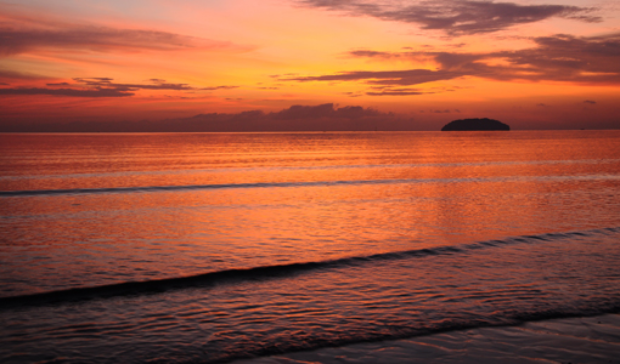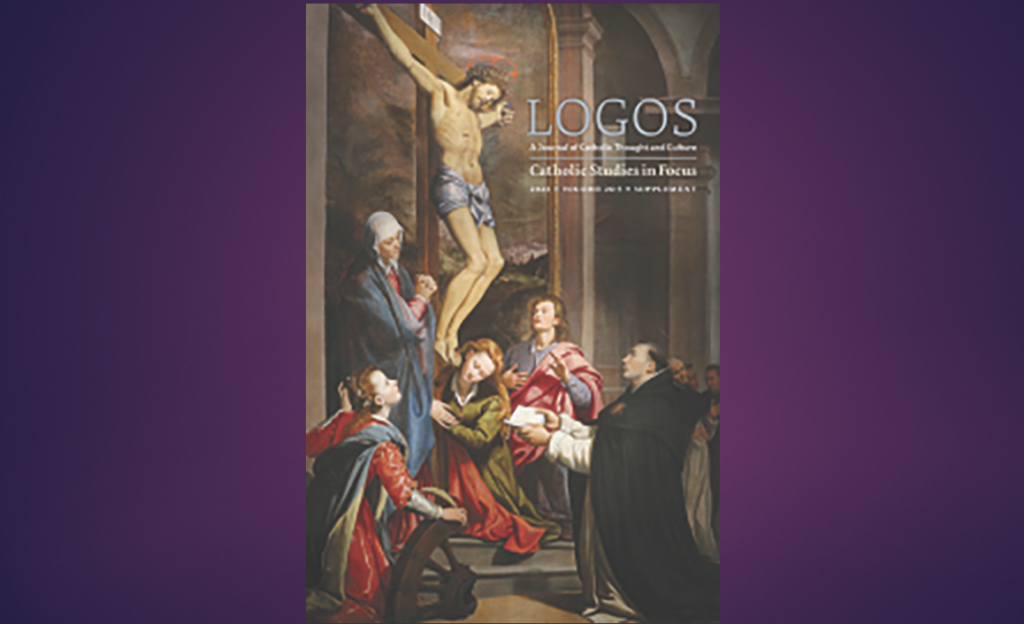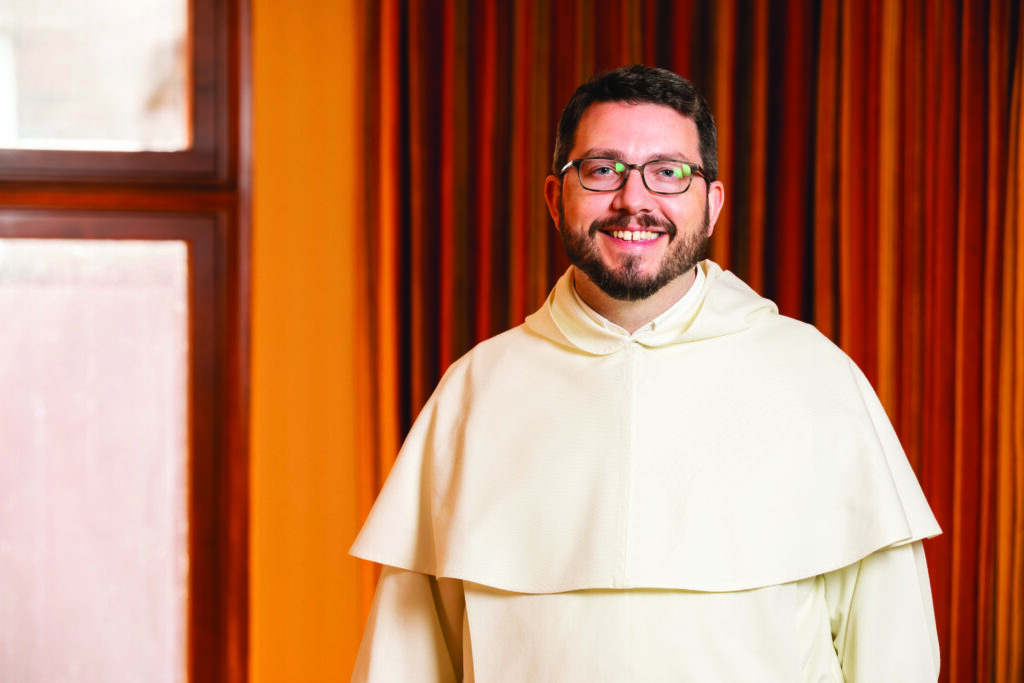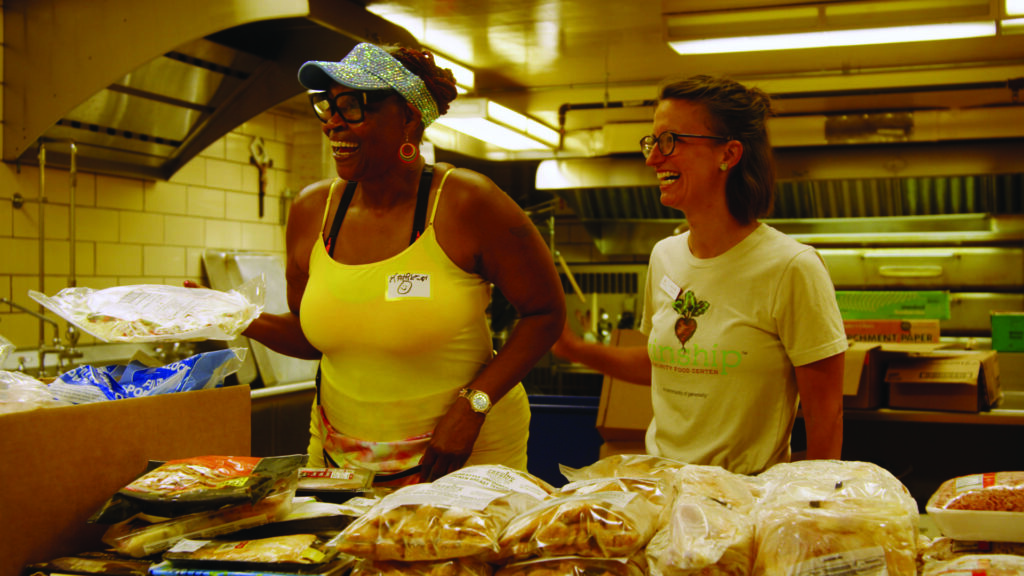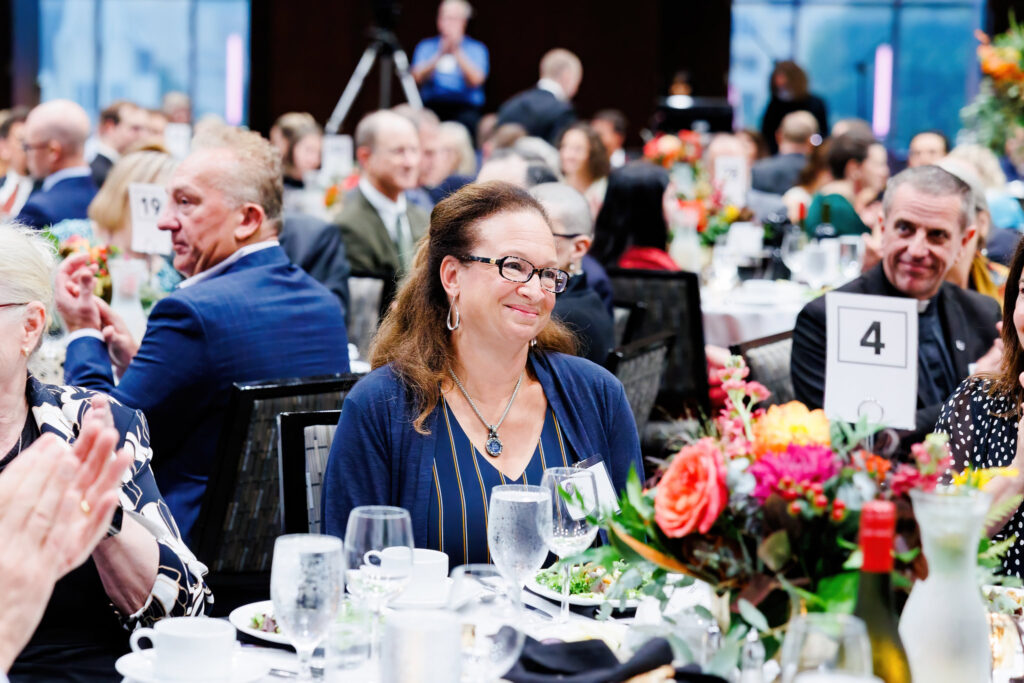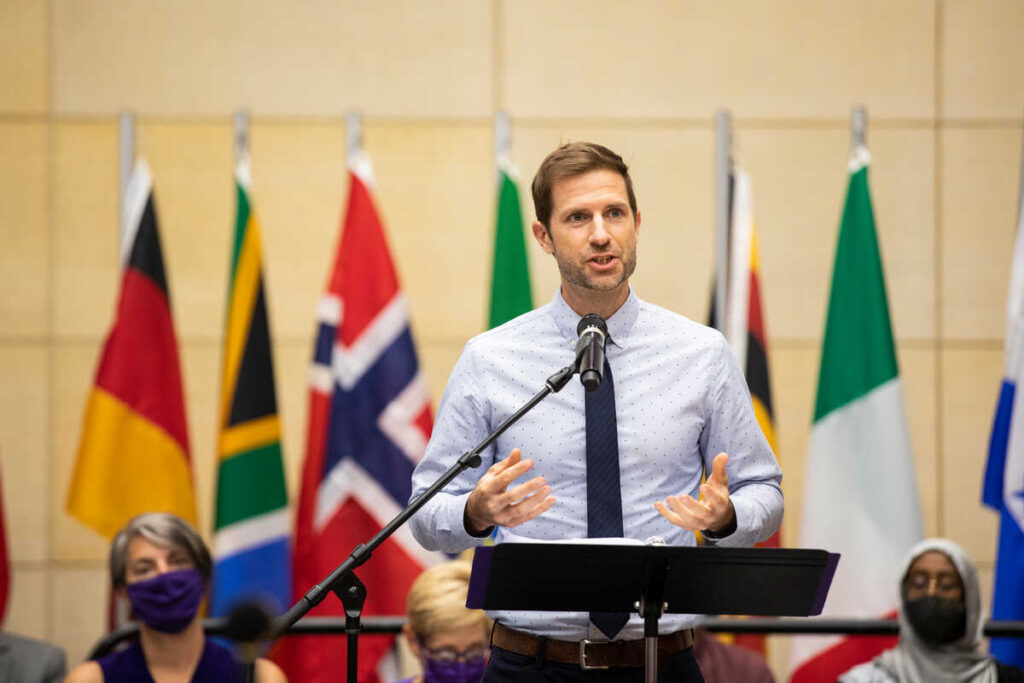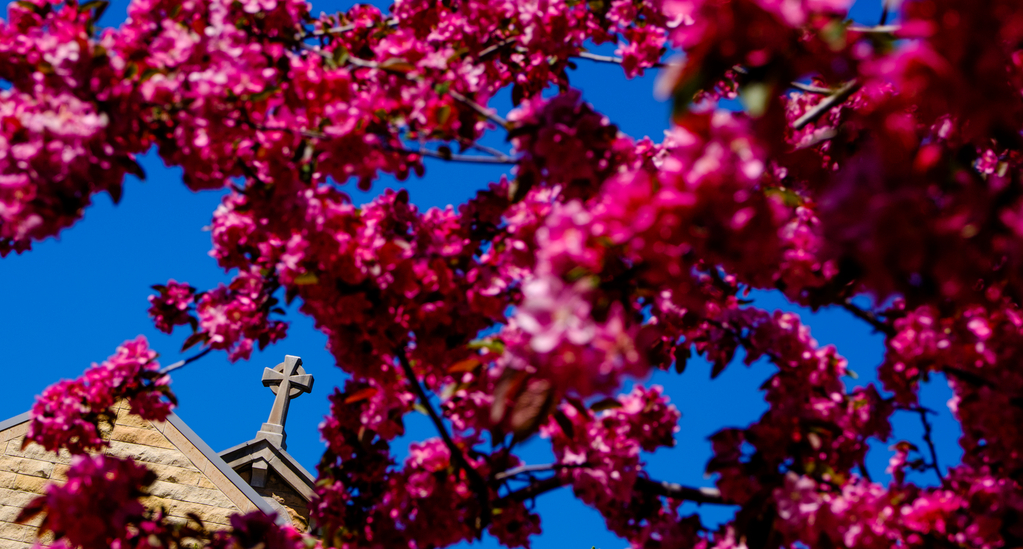Every day during February I closed the gate behind me at 16 Lungotevere delle Armiand watched the sun rise over the banks of the Tiber River. I walked for 25 minutes along the river each morning, gazing upon church steeples, passing ancient landmarks and listening to the Italian shopkeepers setting up their stores. As I made my way beyond the Castel Sant’Angelo, I took a long look down the Via della Conciliazione at the Basilica of Saint Peter. “St. Peter, pray for me,” I would implore, before I set foot through a pair of glass doors at the opposite end of the long thoroughfare. I was onmy way to work.
I was privileged to spend fall semester 2001 in Rome, Italy. Thanks to the generosity of many benefactors and the dedication of those at the Angelicum and the Bernardi Campus, the Catholic Studies Rome program is virtually unmatched by any other university. I was inspired by the culture, art and faith present in Rome. I was a student, tourist and pilgrim during my time there, but I knew there was an opportunity for something more, something to challenge me in a different way.
I met Fr. Peter Fleetwood of the Pontifical Council for Culture in early December. As part of Wednesday night community time at the Bernardi Campus we often invited guests over for Mass and dinner. Fr. Fleetwood was our guest on one such evening. As the evening was winding down, I had the chance to speak with him. I was unaware of his affiliation with Vatican Radio, but soon discovered that we had similar interests. As a triple-major in broadcast journalism, communication and Catholic studies, his work with Vatican Radio piqued my interest. And since I would be completing my studies at the end of the semester, it was my hope that I could acquire an internship before I returned to the United States. This was something I had envisioned ever since I was accepted into the Rome program.
Within one week of meeting Fr. Fleetwood, I found myself in the lobby of Vatican Radio anxiously awaiting an interview with English program directors Sean Patrick Lovett and Stephen Banyra. I was immediately impressed with their professionalism and technology, and with their desire to truly live out the catchy title of “The Pope’s Radio.” I soon learned that Vatican Radio was developed to broadcast an extraordinary type of news. The broadcasters and management at Vatican Radio sought first and foremost to inform the world of the events and activities of the pontiff and the Holy See. They also cover politics and other affairs in order to provide information for Christians who may, in turn, effectively interpret them in relation to their own faith. I was inspired and excited about their mission. At the conclusion of my interview, we decided that the most valuable internship would be an intensive, four-week, full-time position. I was to begin after my studies were completed at the Angelicum.
I was assigned to work primarily with the English feature program, “This is the Vatican.” My main tasks were to assist in editing stories for the show, and to help with production during live broadcasts. I interviewed pilgrims at the Pope’s general audiences, attended press conferences at various embassies to the Vatican, and participated in local seminars that were geared toward the future of the Church. I also voiced the headlines and closers each day, which my family and friends could listen to across the world via the Internet.
I particularly was touched by some of the pilgrims whom I was able to meet and talk with at the Papal audiences. For instance, I spoke with a couple who had visited Rome on their honeymoon 35 years ago, and were returning to celebrate their anniversary. They were filled with enthusiasm as they prepared to see the Holy Father, and they mentioned that they were going to spend much of their vacation time visiting the churches in Rome. I talked to another newlywed couple from the Philippines who came dressed in their wedding attire. Their eyes were glistening with anticipation as they entered Paul VI Hall to have their marriage blessed by Pope John Paul II. I also spoke to students who were beginning spring semester studies at various universities in Rome, and even though many of them had seen the pope before, I was encouraged when they said that there always seemed to be a renewed excitement as they prepared to see him again.
“This is the Vatican” featured reactions from the pope’s audience each Wednesday, as well as the Holy Father’s message for that week. During the time I was interning, the 20-minute show ran live Monday – Saturday at 11 a.m., and was rebroadcast twice each evening. This type of programming was considered a “radiomagazine,” as we covered topics in length – from the pope’s weekly general audience to sequences titled “Ask the Abbot” and “The Latin Lover.” We featured Catholic leaders such as Archbishop John Foley and world-renowned Latinist Fr. Reginald Foster, plus acclaimed Catholic author George Weigel, and political commentator Michael Novak.
Personally, I believe that Vatican Radio holds a special position, with the privilege of highlighting activities of the Catholic Church in a positive light. For me, it was inspirational to hear leaders such as Archbishop Foley share stories about how being Catholic is truly a part of daily life. It was unique for me to be part of a news source that was not ashamed of what it stood for. There was a special sense of ethics found at Vatican Radio that is difficult to find in many corporate news agencies in the United States. Unfortunately, the news about the Catholic Church in secular media often takes a negative approach. Vatican Radio proves that there are indeed a significant number of positive and newsworthy stories from within the Church that should be shared.
One of the most memorable stories that we worked on was for the announcement of Padre Pio’s canonization date. (Padre Pio is to be canonized on June 16, 2002.) As we were learning more about this event, we were busy preparing stories and features about his life and his mission to serve Christ. I remember the excitement that stirred in the newsroom the day we found the voice of Padre Pio in our archives. It was movingto hear this great man give a blessing and pray with the people of Italy in 1968. I willalways remember this moment because it was the first time that I had heard a saint’s voice on the radio.
It also was a powerful revelation that the ability to share the audible message of Padre Pio was the communication tool of the future. Not only will we be able to read about modern day saints and see photos of them, but we also are going to have the opportunity to hear and to see many of them in video images due to advances in technology. I think it is a great gift for the media, and particularly for Vatican Radio, tohave an opportunity to share the lives of the saints in an accessible and unique manner.
I feel fortunate to have been involved with Vatican Radio. I enjoyed the challenges thatwere presented to me in the field of journalism, and I had the privilege of working with some very gifted people. Moreover, working at Vatican Radio ultimately gave me the opportunity to take a closer look at the role of the Holy See, not just as it is played out in the Eternal City, but also how it reaches to all corners of the globe. Vatican Radio employees represent 60 different nations and they broadcast in nearly 40 languages. It was a powerful example for me to walk down the hallways and hear Japanese, German,Swahili and Italian all working to promote the same faith and love for Jesus Christ. Theproof was evident within the walls of Vatican Radio – Catholicism is truly universal.
